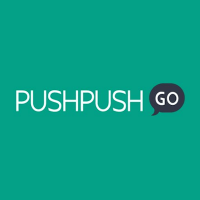How to Convert More Leads, Retain More Customers & Grow Your Revenue with Encharge.io
Marketing automation is everywhere. It helps make processes that would have otherwise been performed manually much more efficient, as well as making new processes possible.
Marketing automation is used to deliver targeted messages across multiple channels (SMS, push notifications, social media messages, direct mail, etc.) to a broader audience at the right time.
If you run a product company, a SaaS, or a mobile app, a well-executed automation strategy can help you attract, convert, and retain more customers more efficiently and at scale.
Product companies and marketers asked to identify the most significant benefit of Marketing Automation for them, say it is:
- Saving time (30%)
- Lead Generation (22%)
- Increase in Revenue (17%)

The impact of automation on the overall bottom line of the business is clear. But where to start with marketing automation and how to implement it in practice?
Building a well planned and executed marketing automation strategy is a complex challenge that requires a lot of multidisciplinary input from the marketing, product, and C-suite departments. It demands careful planning, as well as a thorough evaluation of different marketing automation tools.
The Marketing Automation Needs of Product Companies
Not all marketing automation tools are built for the needs of product companies. In fact, the majority of marketing automation tools cater to content creators (bloggers, authors, and the like), affiliate marketers, info product marketers, marketing agencies, and general marketers.
With SaaS and mobile app products, there are a few requirements that need to be fulfilled when it comes to marketing automation needs.
- Data integrations — the ability to bring customer data attributes from all kinds of tools that span across the whole lifecycle.
- Powerful customer segmentation — a feature that allows to group people based on these attributes.
- Event-based automations — marketing automations that are triggered based on the actions (events) users perform or don’t perform in the product.
- Third-party app integrations — apart from building automated workflows with events, SaaS companies need to be able to orchestrate their whole customer funnel. This includes demo call booking software, landing page software, ads software, and so on. A good marketing automation tool built for product companies need to have a vast list of 3rd party integrations.
Covering all these requirements may seem like a challenge for your average automation or email marketing tool, but do not worry — Encharge.io is marketing automation software built with the product companies in mind.
In this post, we’re going to review some of the most valuable features of Encharge and how they pertain when it comes to executing your automation strategy as a product company.
Encharge.io — Marketing Automation for Product Companies
Encharge.io is a new marketing automation software that helps you bring in customer data from your marketing apps and send automated messages to the right people at the right time.
With Encharge, you can increase your revenue with targeted, personalized messages at scale. Drive better conversions with precise customer segments and understand the Whole customer journey with data from your marketing stack.
Instead of being an all-in-one marketing platform like HubSpot or Pardot, Encharge integrates with the best-in-breed tools like Stripe, Intercom, Facebook Ads, Typeform, and many others.
How Encharge Works
The diagram below demonstrates how Encharge works from a birds-eye view:

- User data is collected in Encharge from external sources such as your website, forms, lead generation tools, webhooks, Segment.com, Stripe, and others.
- The data is used to segment your audience.
- Segments and user data are then used in Flows to automate your marketing and send targeted messages.
- Flows control the messages and allow you to engage your audience with emails, SMS, Facebook Ads, and other mediums.
- External sources return data such as email engagement metrics (opens, clicks and replies) back to Encharge.
Connect Your App With Encharge
One of the biggest challenges with SaaS and product startups when it comes to implementing the marketing automation strategy is integrating the data in the marketing automation tool. To make this step of the onboarding process easier, Encharge offers a number of ways for you to bring in your live product data inside of the platform:
Native Segment.com integration
Segment has become the most commonly used data piping tool that allows you to send customer data to your marketing apps. If you already have an integration with Segment, this is going to be the easiest way for you to bring data in Encharge.
API
The Ingest API lets you create/update people and submit events from your app’s backend directly to Encharge. This option of connecting with Encharge offers a lot of flexibility, but unfortunately, it requires the help of a developer. Therefore it could take anywhere from a few days to a few weeks and sometimes even months, depending on the availability and bandwidth of your developers.
Javascript tracking
With Encharge, you can track events that happen on your app’s frontend or your site using the Encharge Javascript tracking. Similarly to the API option, this option requires the attention of a developer.
Create Precise Customer Segments
Customer segmentation is the practice of dividing your customer base into groups of individuals that share common characteristics, such as location, language, acquisition source, customer value, preferences, app activity, and others.
Once you have the data flowing in Encharge, you want to create targeted segments that you can later build messages and flows for.
Creating user segments allows you to:
- Get the full 360 degrees view of your prospects, trial users, and customers.
- Build marketing automations based on segments. A person enters or leaves a flow when they enter or leave a user segment. This allows you to send targeted, personalized emails, SMS, and push notifications that best fit the user segment. For instance, you might want to segment your audience into high-value and low value leads.
- Use personalization across the full multichannel communication.
Creating new segments in Encharge is as easy as one-two-three. Once your user data is flowing to Encharge, you simply go to the People’s section and select the attributes that you want to create a segment from.

Build Visual Flows
Automations in the platform are created through a visual drag-and-drop workflow builder that allows you to create powerful customer journeys and user experiences. You simply drag steps on the canvas and connect them to create a live flow.
Flows in Encharge consist of Steps. There are 3 types of Steps in Encharge:
- Triggers – Triggers start flows. People enter flows through Triggers.
- Actions – Actions do different marketing automation things, like Sending an email.
- Filters – Filters filter people into different buckets or swimming lanes based on specific conditions. For example, Send an email if Person has a value of $100 OR add to a Facebook audience if the Person has a value of $500.
Encharge Example Use Cases
Increase the engagement of your email messages
Email is not dead, it’s just crowded. It’s much harder to stand out in the inbox of your customers and potential customers than it was five years ago. With Encharge, you can build personalized marketing automation flows that double your open rates and click-through rates.
One of the easiest ways to achieve that is by sending a follow-up email to all people who have missed opening your first email. After all, if a person doesn’t open your email that doesn’t mean they don’t like your message — they simply voted against your subject line.

Keep your leads involved across all channels
If email is not effective with your audience, you still have Facebook Ads. With Encharge’s native Facebook Ads integration, you can automatically send inactive leads to a Facebook Ads audience. No need to export/import CSV files, as the Encharge flow does that for you automagically.

Build campaigns based on the actions of your users
Action-based emails get 70% higher engagement than time-based email communication. Once you have your user events (or actions) flowing to Encharge, you can create powerful automations based on what your users do or don’t do in your app.
For instance, you can send a nudge email every time a user opens a specific feature page but doesn’t activate the feature. Or you can follow up interested prospects that visit your pricing page more than once.
Pricing
Encharge is priced on the number of contacts that you have live in the platform, starting at $49 for 2000 contacts.
Conclusion
If you’re open to working with a young company, Encharge offers good functionality for SaaS and mobile app products at an affordable price.
It still doesn’t have the depth of features that you would get with ActiveCampaign or another mature marketing automation tool. Still, its focus on features for SaaS companies and the personal approach from the founding team makes Encharge a good option for early to middle-stage product companies. Sign up today and try Encharge for free.
About the Author

Kalo Yankulov is a co-founder and marketer at Encharge. He helps SaaS companies and mobile apps implement marketing automation strategies that increase monthly recurring revenue and retain more customers.







